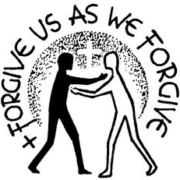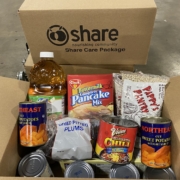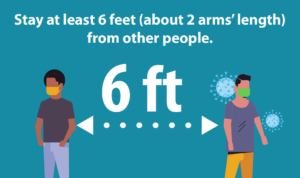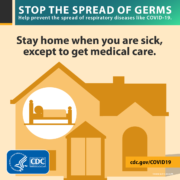BISHOP’S EXECUTIVE SUMMARY – ORDER
|
|
|
|
|
|
|
|
|
|
|
|
|
|
|
|
|
|
|
|
|
|
|
|
|
|
|
|
|
|
|
|
|
|
|
|
Here is our VIDEO (via YouTube) for the Sunday Mass. St. David’s In the Pines, Wellington, FL.
Please remember to like, share and subscribe free to our church’s YouTube account to retain our permanent status in the future (only 40 subscriptions away).
You may follow along with the scripture lessons via this link below… Please view TRACK 2 for proper readings…
https://www.lectionarypage.net/YearA_RCL/Pentecost/Aprop8_RCL.html
Bishop Peter Eaton has issued an EXECUTIVE SUMMARY for all the congregational faithful, listed on this website in our Weekly Newsletters area. St. David’s plan sent to the dioceses is pending approval so that we may forward it on to all of our members. We are NOT scheduled to open yet.
Here is the Bishop’s original policy…
https://files.constantcontact.com/be5a1aca201/1440ff38-6717-42ca-acba-0ab1af8d9d62.pdf
During our weekly video filming we also record snippets of the mass to post to Facebook; please look for the Announcements and Scriptures there as well….
https://www.facebook.com/SaintDavidsInThePines/
Here on our website, you may find videos, newsletters, global links, pictures as well as a future interactive scripture study, prayer wall and blog.
God Bless, grant you peace and may you be well.

A certain father was desperate for some peace and quiet one wet Sunday afternoon, so from his newspaper’s color supplement he tore out a picture of a map of the world. He got a pair of scissors and cut the map into small pieces and then said to his children, “Come on now and put the world together again.” After a bit of grumbling there were a few giggles and whispers, then a period of concentration, at the end of which the youngsters said, “There you are, we’ve done it.” And so they had – but the picture was not a map of the world. It was a photograph of a very happy looking family. The children had discovered that it was on the back of the map picture. And very fitting too; for isn’t the foundation of a united world a happy family?

Easier said than done, of course, but as Christians, our primary responsibility is not simply to “work our way into heaven,” but to bring others with us. One more story – A group of first graders was discussing a picture of a family. One little boy in the picture had a different hair color than the other members. One of the students suggested that he was adopted. A little girl said, “I know all about adoption; I was adopted.” “What does it mean to be adopted?” asked another child. “It means,” said the girl, “that you grew in your mommy’s heart instead of her tummy!”
The Good News, in this and every age, is that God loves us, and that we as disciples of His Son, are meant to be agents of love in our broken and torn world. When we show kindness to those who can repay us, it’s called “networking.” When we show kindness with no thought of repayment, it’s called love.
NOTICES:
The Diocese of Southeast Florida – has extended the ban on Church-wide in-person services, events and meetings and other activity until further notice. Live-streaming and recording of worship will continue, but no other in-person activity is permitted. We will move into Season 2 only when we are clear that it is safe to do so.
Village of Wellington – the food distribution in Wellington is at the Wellington Mall by Nordstrom at 8:30-10:30 a.m. on TUESDAYS. You will be given a voucher when you are in line. Let the person know if you are getting food for more than one family. View the link to learn more information…https://www.wellingtonfl.gov/CivicAlerts.aspx?AID=164
Sandwiches for St. George’s Outreach Project Extended through July – Please continue to prepare sandwiches for St. George’s and bring them to St. David’s parking lot each Wednesday morning from 8:30 to 9:30 am. Thank you for your continued support!
Please Pray – For the sick: Sarah, Alicia, William, Richard, Carole, Sandy, Kim, Joe, Steve, Bob, Linda, Francine, Donna, Ashlyn. For birthday celebrations: Jacquie Murray, Cristina Anzures. For our expectant mother: Andrea. For wedding anniversaries: Doug & Joy Noe, Danny & Carol Sneade, Michel & Theresa Guillaume.
https://www.lectionarypage.net/YearA_RCL/Pentecost/AProp7_RCL.html
https://www.facebook.com/SaintDavidsInThePines/

Happy Blessed Father’s Day.
Here is our VIDEO for the Sunday Mass. St. David’s In the Pines, Wellington, FL. Below is the YouTube link to Sunday’s video for Trinity Sunday, 1st Sunday after Pentecost.
.https://www.youtube.com/watch?v=qTM9duqaMgo&feature=youtu.be
Please remember to like, share and subscribe free to our church’s YouTube account to retain our permanent status in the future.
You may follow along with the scripture lessons via this link below… Please view TRACK 2 for proper readings…
https://www.lectionarypage.net/YearA_RCL/Pentecost/AProp7_RCL.html
Bishop Peter Eaton has issued an EXECUTIVE SUMMARY for all the congregational faithful, listed on this website in our Weekly Newsletters area. St. David’s plan sent to the dioceses is pending approval so that we may forward it on to all of our members. We are NOT schedule to open.
Here is the Bishop’s original policy…
https://files.constantcontact.com/be5a1aca201/1440ff38-6717-42ca-acba-0ab1af8d9d62.pdf
Please refer to the 5/24/20 newsletter for details on procedures for re-opening sometime in July, hopefully.
During our weekly video filming we also record snippets of the mass to post to Facebook; please look for the Announcements and Scriptures there as well….
https://www.facebook.com/SaintDavidsInThePines/
Here on our website, you may find videos, newsletters, global links, pictures as well as a future interactive scripture study, prayer wall and blog.
God Bless, grant you peace and may you be well.

A father and his son went on a fishing trip. When they returned home, the father was talking to a friend and at the same time the son was talking to a friend of his. The friend asked the father how the trip went, the father’s response, “Absolutely miserable, worse day of my life. We struggled getting the boat ready to go, got to the lake and had to go and get gas, got out on the water late, and all the good fishing spots were already taken, finally found a place and the lines were all tangled together. No matter what kind of bait I was using, the fish were biting on something different. The sun was hot, and the mosquitoes were biting, and we didn’t catch a thing. The son’s friend asked how the trip went, and the son replied, “Best day of my life; didn’t catch a thing, but I got to spend the day alone with my dad.”
![]() Last week in the sermon, I spoke about the REAL Presence of Christ in the Eucharist. I’m reminded of a story about St. Jean Vianney, the humble 19th c. Roman Catholic priest from Ars, France, who used to spend a great deal of time in the church, staring at the tabernacle above the altar (the receptacle which houses the Blessed Sacrament). Someone once entered the church and asked him, “What are you doing?” To which the saintly priest replied, “I look at Him, and He looks at me.” That just about says it all! When we’re in the presence of someone we love the time is well spent. So, it is with God our heavenly Father, whether in church at mass, or in the seclusion of our own homes. On this Father’s Day Weekend, let us give thanks for our fathers, living and departed, and pray for all parents.
Last week in the sermon, I spoke about the REAL Presence of Christ in the Eucharist. I’m reminded of a story about St. Jean Vianney, the humble 19th c. Roman Catholic priest from Ars, France, who used to spend a great deal of time in the church, staring at the tabernacle above the altar (the receptacle which houses the Blessed Sacrament). Someone once entered the church and asked him, “What are you doing?” To which the saintly priest replied, “I look at Him, and He looks at me.” That just about says it all! When we’re in the presence of someone we love the time is well spent. So, it is with God our heavenly Father, whether in church at mass, or in the seclusion of our own homes. On this Father’s Day Weekend, let us give thanks for our fathers, living and departed, and pray for all parents.
NOTICES:
Happy Blessed Father’s Day.
Plans Change – Bishop Peter has “extended the closure of our congregations, schools, and special ministries until at least June 30th. Live-streaming and recording of worship may continue….no other in-person activity is permitted. We continue to monitor the situation very closely, and we shall move into Season II only when we are clear that it is safe to do so. This continued period of closure is the perfect opportunity for making preparations and ensuring that all is in order for the time when it becomes possible and safe to re-enter and re-gather. Read the Bishop’s Executive Summary in its entirety, found among the newsletter postings on this site.
Village of Wellington – the food distribution in Wellington is at the Wellington Mall by Nordstrom at 8:30-10:30 a.m. on TUESDAYS. You will be given a voucher when you are in line. Let the person know if you are getting food for more than one family. View the link to learn more information…https://www.wellingtonfl.gov/CivicAlerts.aspx?AID=164
Sandwiches for St. George’s Outreach Project Extended through June – Please continue to prepare sandwiches for St. George’s and bring them to St. David’s parking lot each Wednesday morning from 8:30 to 9:30 am. Thank you for your continued support!
Please Pray – For the sick: Diana, Sarah, Alicia, William, Richard, Carole, Sandy, Kim, Joe, Steve, Bob, Linda, Francine, Donna, Ashlyn. For birthday celebrations: Jonathan Pierre-Paul, Valerie Gordon, Marie Pierre-Paul, Kitonga Kiminyo, Leona Rozzi, Zane Hawk. For our expectant mothers: Andrea. For the faithful departed: Caswell Harish.
https://www.lectionarypage.net/YearA_RCL/Pentecost/AProp7_RCL.html
Here is our VIDEO for the Sunday Mass. St. David’s In the Pines, Wellington, FL. Below is the YouTube link to Sunday’s video for Trinity Sunday, 1st Sunday after Pentecost.
Unfortunately the FIRST VIDEO was without sound, but the overlay of hymn words are viewable, due to file transfer protocol (FTP) parameters (if you are familiar in this area, please contact me). We will continue to work on this issue, thank you for your patience. For all members, your email has a word doc of all the music text.
Please remember to like, share and subscribe free to our church’s YouTube account to retain our permanent status in the future.

You may follow along with the scripture lessons via this link below… Please view TRACK 2 for proper readings…
https://www.lectionarypage.net/YearA_RCL/Pentecost/ATrinity_RCL.html
Bishop Peter Eaton has issued an EXECUTIVE SUMMARY for all the congregational faithful, listed on this website in our Weekly Newsletters area. St. David’s plan sent to the dioceses is pending approval so that we may forward it on to all of our members. We are NOT schedule to open.
Please refer to the 5/24/20 newsletter for details on procedures for re-opening sometime in July, hopefully.
During our weekly video filming we also record snippets (and later the finished issues of the video in its entirety) of the mass to post to Facebook; please look for the Announcements and Scriptures there as well….
https://www.facebook.com/SaintDavidsInThePines/
Here on our website, you may find videos, newsletters, global links, pictures as well as a future interactive scripture study, prayer wall and blog.
God Bless, grant you peace and may you be well.
Russ Blowers was a minister in Indianapolis who was also active in his local Rotary club. At club meetings each week a member would give a brief statement about his or her job. When it was Russ’ turn; he’d say, “I’m with a global enterprise. We have branches in every country in the world. We have our representatives in nearly every parliament and board room on earth. We’re into motivation and behavior alteration. We run hospitals, feeding stations, universities, publishing houses, nursing homes. We care for our clients from birth to death. We are into life insurance and fire insurance. We perform spiritual heart transplants. Our original Founder owns all the real estate on earth plus an assortment of galaxies and constellations. He knows everything and lives everywhere. Our product is free for the asking. Our CEO was born in a hick town, worked as a carpenter, didn’t own a home, was misunderstood by his peers, hated by enemies, walked on water, was condemned to death without a trial, arose from the dead; and I talk with Him every day.”
Hopefully, most of us are talking with Our Lord every day, and perhaps these days, more often than usual. Not to minimize the stress and concerns of the present time, but where would the world be without the Christian Faith in all its manifestations and ministries over the past two millennia? Of course, our own personal salvation is important; but being agents of love in a world of darkness, has, and will continue to make all the difference. In the words of the Russian novelist, Alexander Solzhenitsyn, “Men have forgotten God. That’s why all this has happened.” So, even though the pessimist may see difficulty in every opportunity; the optimist sees opportunity in every difficulty. “Therefore, pray like it’s all up to God, then work like it’s all up to you.”
NOTICES:
Plans Change – Bishop Peter has “extended the closure of our congregations, schools, and special ministries until at least June 30th. Live-streaming and recording of worship may continue….no other in-person activity is permitted. We continue to monitor the situation very closely, and we shall move into Season II only when we are clear that it is safe to do so. This continued period of closure is the perfect opportunity for making preparations and ensuring that all is in order for the time when it becomes possible and safe to re-enter and re-gather.” Read the Bishop’s Executive Summary in its entirety, found among the newsletter postings on this site.
 Village of Wellington – the food distribution in Wellington is at the Wellington Mall by Nordstrom at 8:30-10:30 a.m. on TUESDAYS. You will be given a voucher when you are in line. Let the person know if you are getting food for more than one family.
Village of Wellington – the food distribution in Wellington is at the Wellington Mall by Nordstrom at 8:30-10:30 a.m. on TUESDAYS. You will be given a voucher when you are in line. Let the person know if you are getting food for more than one family.
https://www.wellingtonfl.gov/CivicAlerts.aspx?AID=164
Sandwiches for St. George’s Outreach Project Extended through June – Please continue to prepare sandwiches for St. George’s and bring them to St. David’s parking lot each Wednesday morning from 8:30 to 9:30 am. Thank you for your continued support!
Please Pray – For the sick: Monique, Diana, Sarah, Juanita, Patti, Alicia, William, Caswell, Richard, Carole, Sandy, Kim, Joe, Steve, Bob, Linda, Francine, Donna, Ashlyn. For birthday celebrations: Jean Marshall, Shelley Baranowski, Carmen Johnson, Doug Noe, Sharon Young, Tann Philistin, Andrew Duquesnay. For those celebrating a wedding anniversary: Win & Shelley Blodgett. For our expectant mothers: Dani and Andrea.

https://www.lectionarypage.net/YearA_RCL/Pentecost/AProp6_RCL.html
https://www.facebook.com/SaintDavidsInThePines/

|
|
|
|
|
|
|
|
|
|
|
|
|
|
|
|
